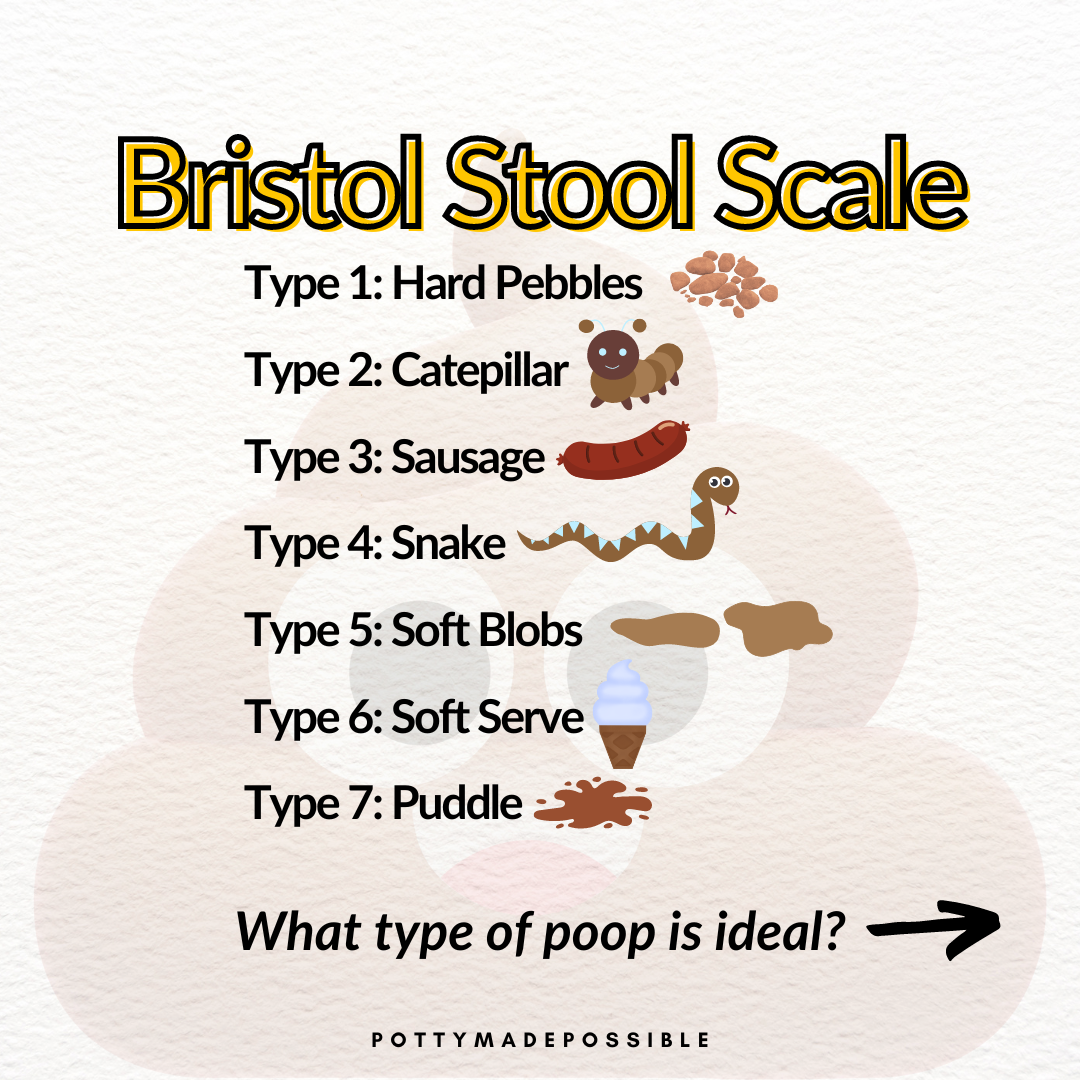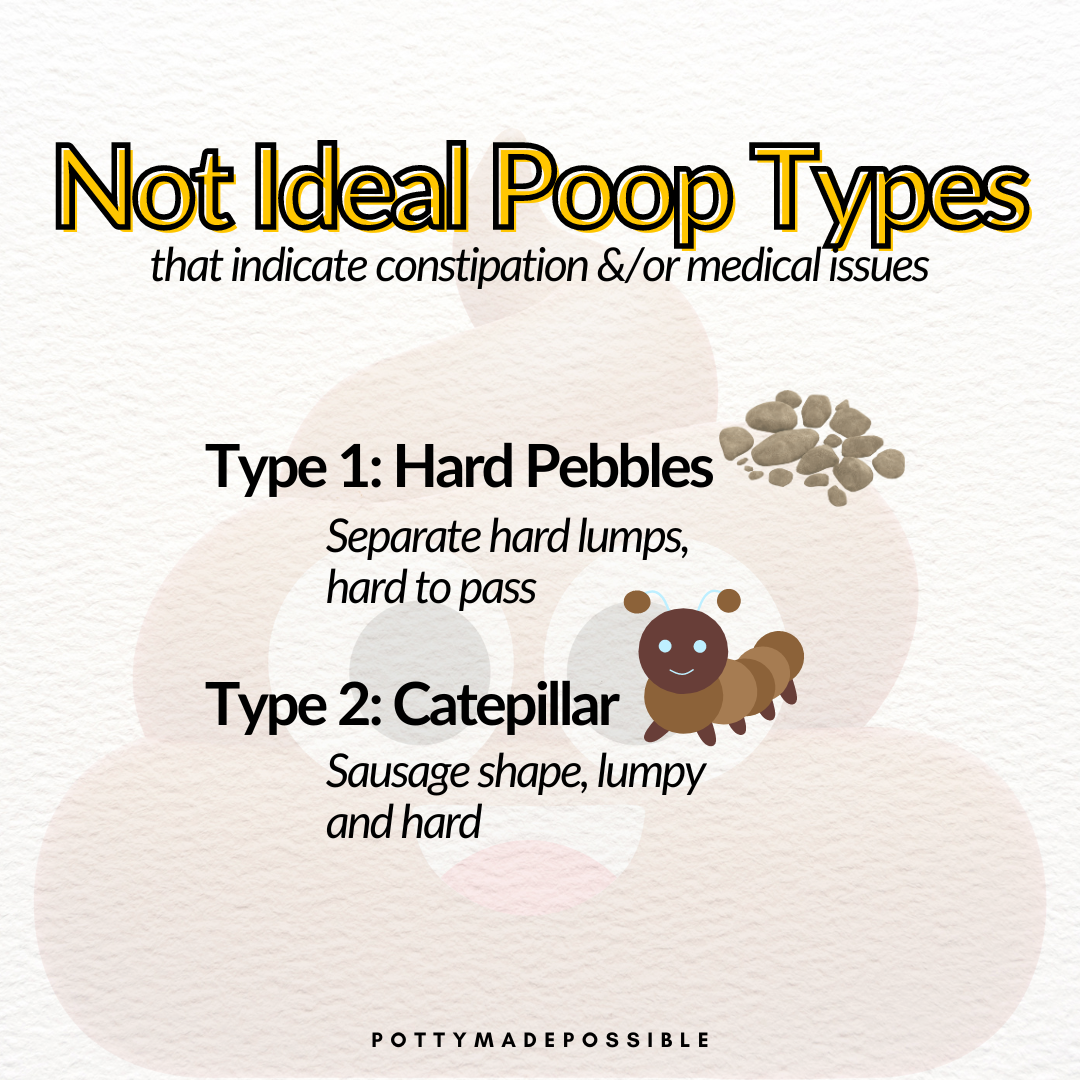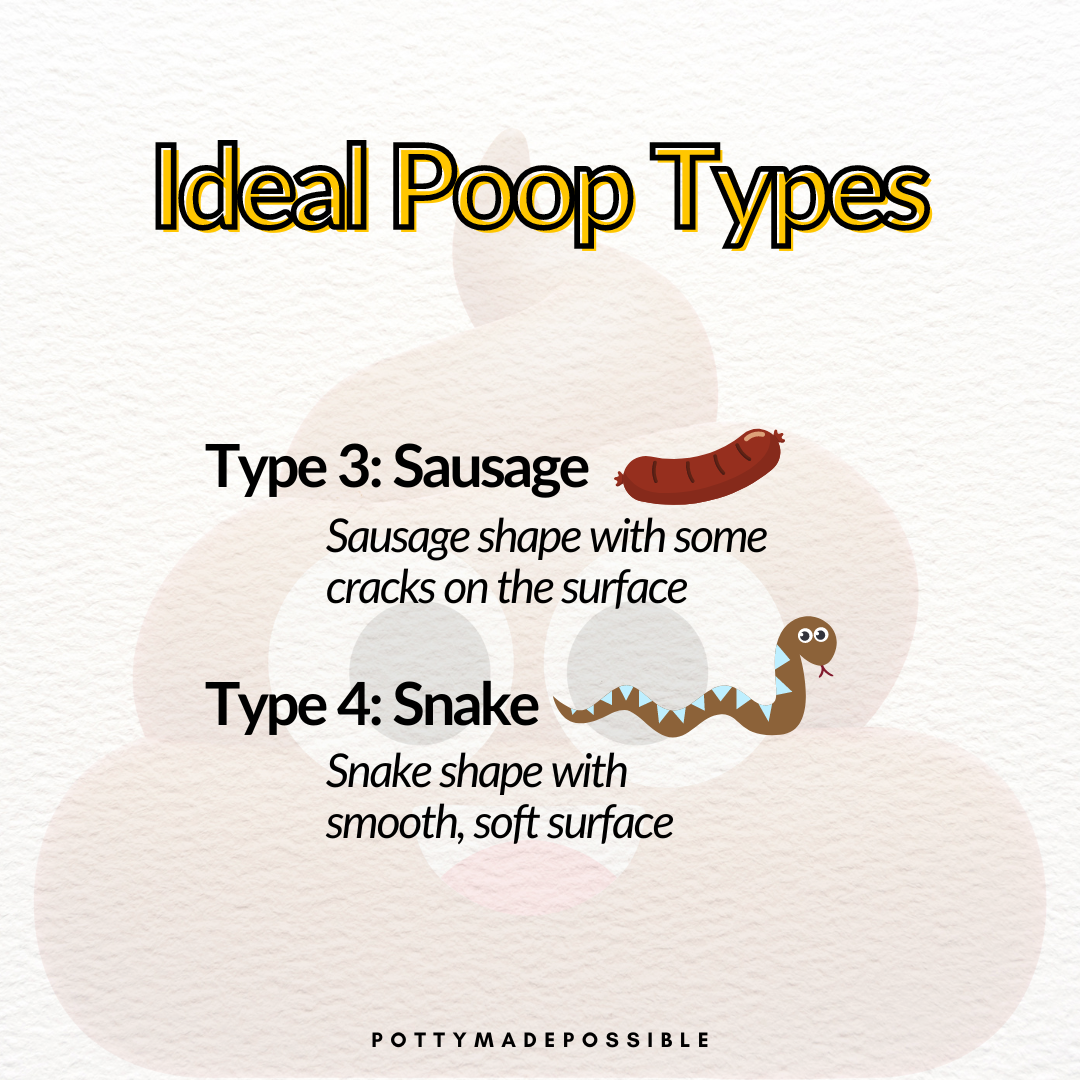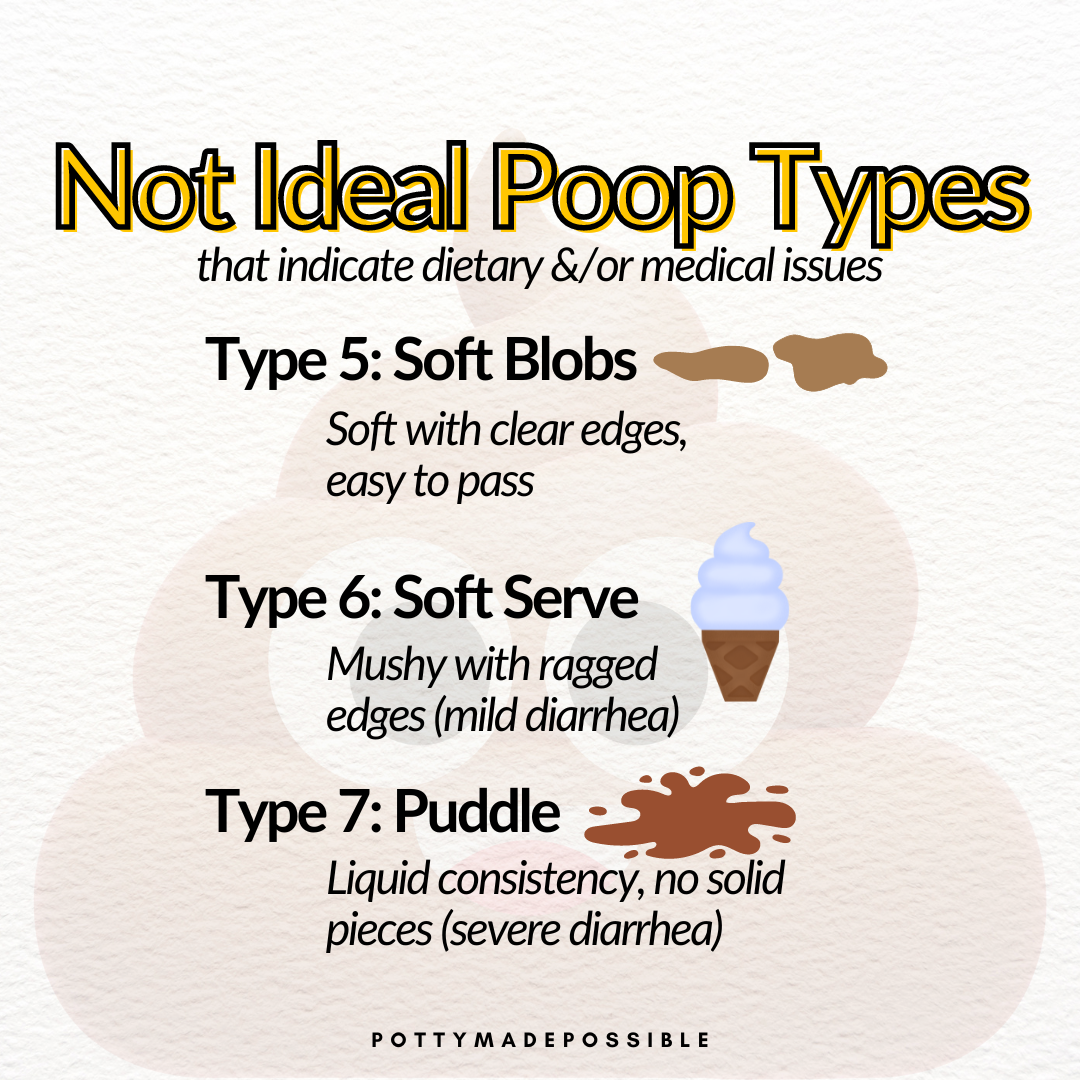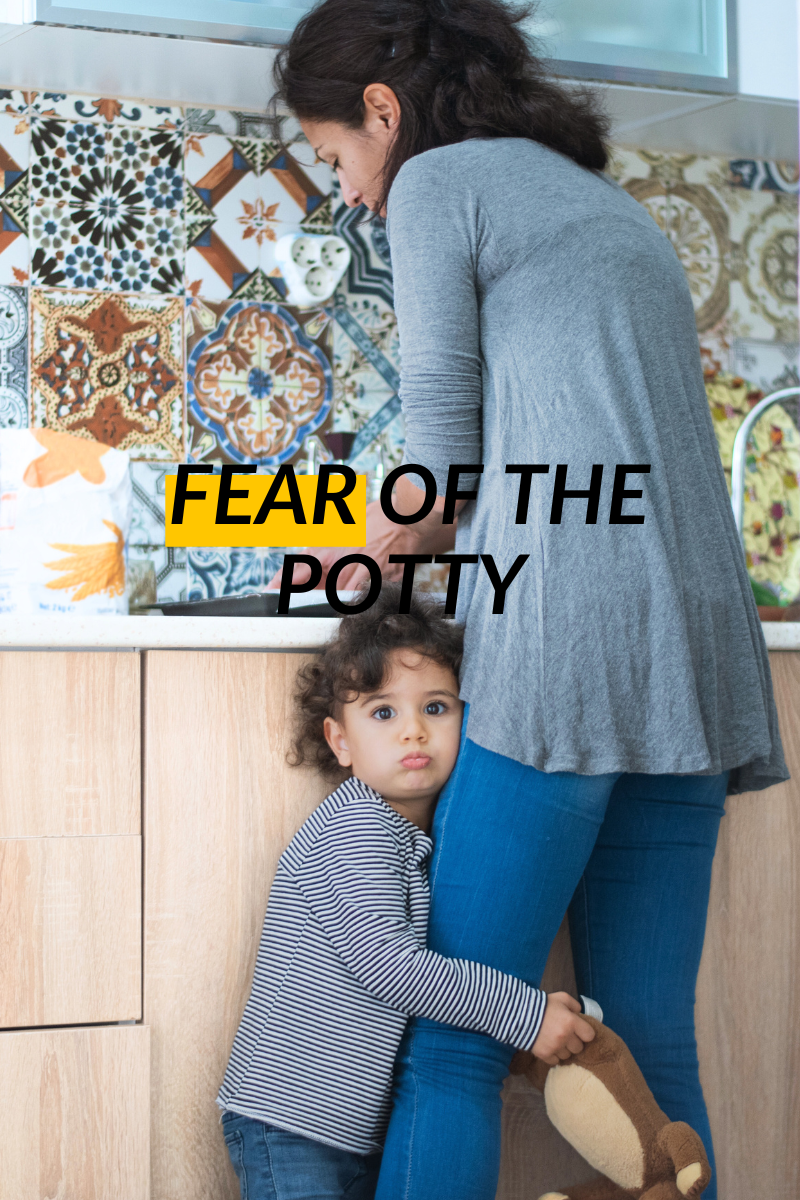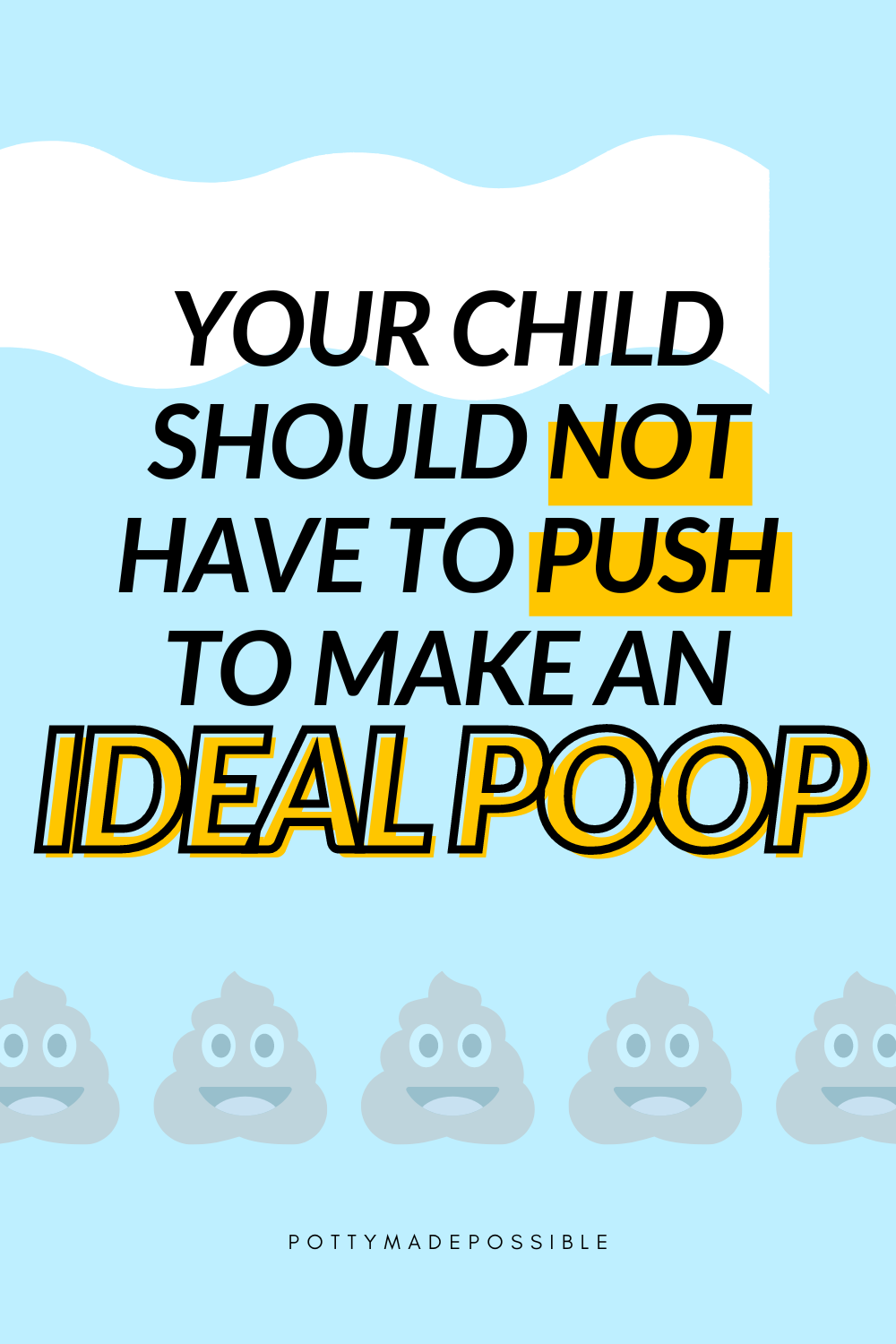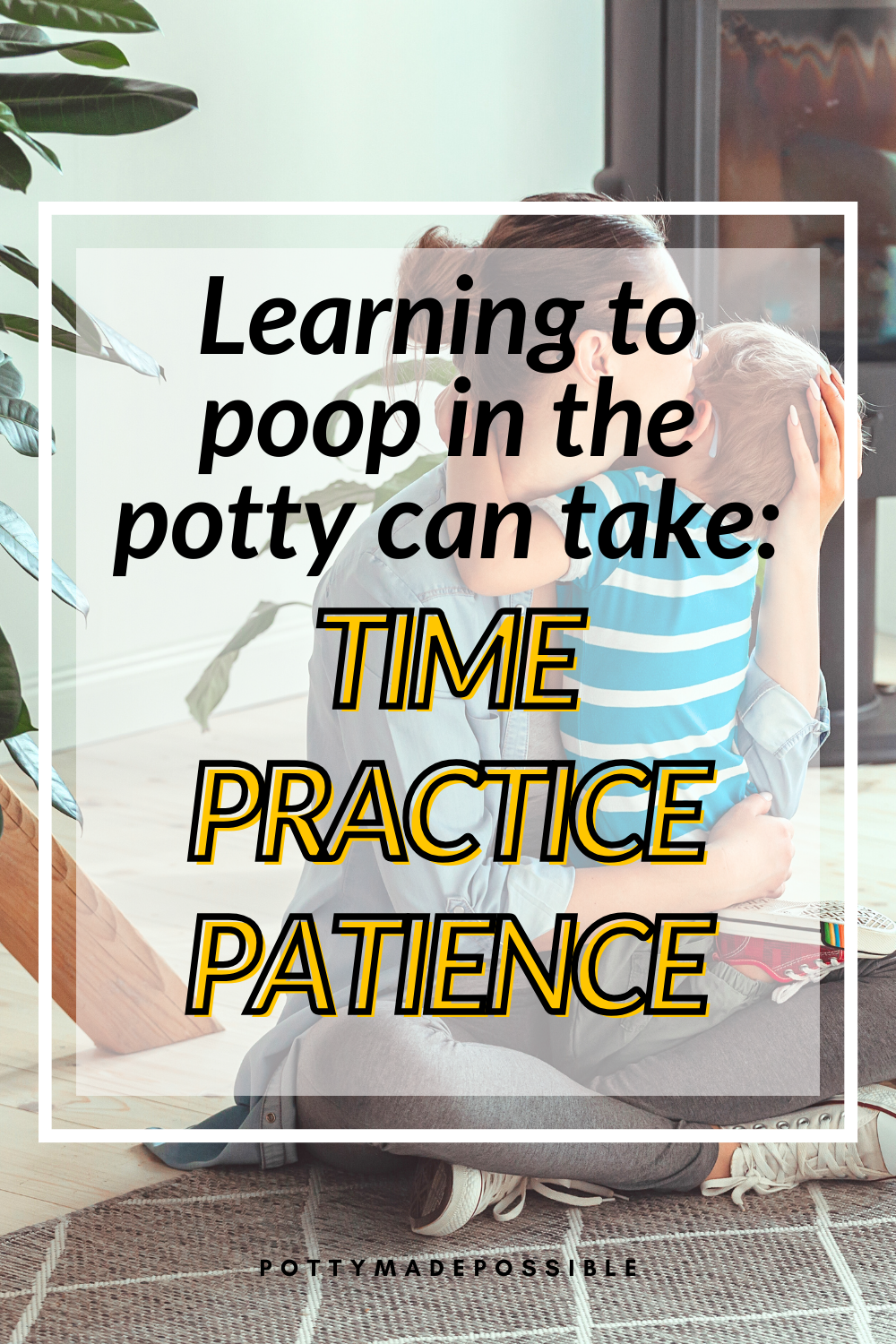5 Reasons Why Your Child Won’t Poop in the Potty
You might be concerned if you’ve been potty training for several days, weeks, or months and your child is resistant to poop in the potty.
The first step to solving your child’s poop struggles is figuring out why.
Reasons a child may refuse to poop in the potty
1. Your child is constipated
Constipation can be uncomfortable!
If your child feels like pooping is painful, of course, they are not going to want to poop in the potty - or maybe not poop at all.
Signs of constipation:
Small poops
Round poops
Hard poops
Dry poops
Loose, leaky stools
Pooping less than 2 times per week can be a sign of constipation, as well.
It’s even possible for a child to poop often but still be backed up with poop if they are not fully eliminating their bowel movements when they do poop.
You can read more about the causes and symptoms of constipation in children here.
Hard poop is difficult to eliminate. It’s uncomfortable and requires straining. This can lead to a lot of small poop accidents.
Leaky bowel movements can also cause potty accidents.
If your child has been constipated for a long time, their rectum is likely stretched, their sensitivity is decreased, and they need more poop in their rectum to feel the need to eliminate.
Not only can it be difficult for a child that is constipated to notice when they have to poop, the frequent accidents may also contribute to a lack of confidence.
2. Your child is withholding poop
Withholding poop can happen as a result of constipation, or it can be the cause of constipation.
Some other things that can lead to a child withholding their stools include:
A painful experience with diarrhea
An unexpected accident
A big poop-mess
Difficulty with change
Other big life changes
Trauma
If your child is withholding poop, you may be familiar with some “interesting” behaviors that happen when the withholding is occurring. You might notice your child showing physical signs that they need to poop and they may act nervous, anxious, or be resistant to your help. More on this in #3.
3. Your child has a fear of pooping in the potty
Being afraid of pooping in the potty is likely caused by similar reasons discussed above in #1 and #2. There could be a constipation-related cause or your child may have had a scary experience with the bathroom, toilet, or even pooping in a diaper or pull-up. It could have been a really loud bathroom experience, a sudden and unexpected splash during a poop in the potty, a slip and tumble while trying to sit on the potty, etc.
If your child is generally on the anxious side, potty training can bring up more of those feelings, especially if they feel pressure to learn how to use the potty.
4. Your child is not comfortable sitting on the potty
Do your child’s feet dangle on the big toilet?
Does your little one have trouble holding themselves up on the potty?
Is your child’s potty seat uncomfortable for their bottom?
Does your child have a hard time getting onto the toilet?
Is your child “bored” while sitting on the potty?
If your child is not comfortable while sitting on the potty, they may have a tense body. This does not help when it comes to pooping!
5. Your child is still learning how to use the potty
Pooping in the potty is a big, new skill!
Often, kids learn to pee in the potty before they poop in the potty consistently. It's common for children to have occasional accidents, poop in their nap- or night-time pull-up, or show minor resistance during the first few weeks of potty training.
Whether you’re in the early stages of potty training or have been trying to get your child potty trained for a while, keep reading for some tips!
How to help a child poop in the potty
One of the most important things to do when your child is refusing to poop in the potty is to stay positive!
This might feel extra challenging, but your child WILL learn to poop in the potty.
Here are some tips to help address the reason your child is not pooping in the potty.
1. Resolve your child’s constipation
If your child is dealing with constipation, it is best to address it! For some kids, constipation may have been a problem prior to potty training. In that case, there is likely a root cause of constipation.
For other kids, constipation happens as a result of withholding their bowel movements after starting potty training.
In either situation, we recommend consulting with a medical professional, such as a physician, dietitian, and/or pelvic floor therapist to help your child have softer, more ideal poops. Consider the strategies below along with any medical interventions - a comprehensive approach is key!
2. Increase the frequency of pooping
If your child has been withholding their poop, you’re going to want to help them eliminate when they have the urge to poop. And… poop more frequently.
Part of the solution to this will likely be addressing their constipation.
You’ll also want to respond in a helpful way when you notice signs that your child is trying to avoid pooping. Provide your child with reminders of their potty expectations. It’s important to stay calm and reassuring during these times.
3. Help ease your child’s potty fears
If you know the specific situation or sensation your child is fearful of, you can attempt to eliminate that component from your child’s bathroom routine.
For example, if your child is afraid of flushing, let them skip flushing while they get comfortable pooping in the toilet. Once that is going well, you can work on slowly adding that component back in.
If your child is anxious to sit on the potty, you can give them low-pressure opportunities to practice sitting when they don’t actually have to go potty. They can even do this with clothes on.
The idea here is to gradually help your child overcome any fears associated with pooping.
4. Make sure your child can sit comfortably on the potty
Ensure that your child can sit on the potty or toilet comfortably. The potty or toilet seat topper should be comfortable and a good size for your child. Optimal Poop Posture also includes planted feet - on the ground of a stool.
Read more about the best seats and stools for potty training here.
Double-check for comfort and make sure the bathroom is an inviting and enjoyable place. It can also be helpful to add a kid’s touch, like fun decorations or a bathroom bin of toys and books that are exclusively available when your child is using the potty.
5. Take small steps to teach your child how to poop in the potty
If getting your child to poop in the potty seems like a HUGE feat, you may need to work towards the end goal by breaking the skill down into smaller steps.
Start with a small change from their current pooping status, and slowly incorporate changes to the potty expectations as your child makes progress.
Taking a step-by-step approach is a great way to help your child build confidence and learn to poop on the potty.


